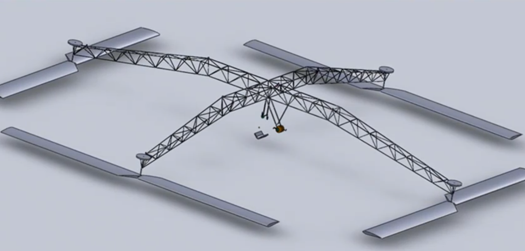U. of Maryland’s Human-Powered Helicopter Aims to Make Aviation History Next Week
Two years, 50 graduate students, countless man hours, and mankind’s insatiable need to prove he can defy gravity will all...

Two years, 50 graduate students, countless man hours, and mankind’s insatiable need to prove he can defy gravity will all come to a head on Wednesday when a team of University of Maryland Students attempts to fly its human-powered helicopter, Gamera. They won’t be flying very high, but the payoff could be tremendous; hanging in the balance is a world record, an aviation “first,” and a claim to the $250,000 Sikorsky Challenge.
Constructed of lightweight balsa wood, foam, mylar, and carbon fiber among other things, Gamera is something of a feat in engineering. The backbone is a massive X-frame, with each crossbar measuring 60 feet. At the ends of each crossbar sits a 42-foot rotor powered by the human pilot/engine, who pedals furiously from a module suspended from the center of the X-frame.
All said, Gamera’s footprint is something like one-third of a football field, yet the whole rig weighs just 210 pounds, including the female pilot. And the fact that she is female is relevant–should Gamera fly, the team could capture the world record for human-powered flight by a female pilot.
As for the larger aim, the team is trying to finally clinch the Sikorsky Prize, an incentive issued by the American Helicopter Society in 1980 that no one has yet been able to claim. The $250,000 purse is reserved for the first person or team that can get a human-powered helo off the ground for a 60 second hover that reaches a minimum three-meter altitude (that’s just shy of 10 feet) while remaining inside a 32.8-feet square (in other words, the pilot has to have control of the thing).
The attempt will take place between 9 a.m. and 12 p.m. this coming Wednesday, May 11. For a breakdown of how Gamera came to be and what to expect, check out the video below.
